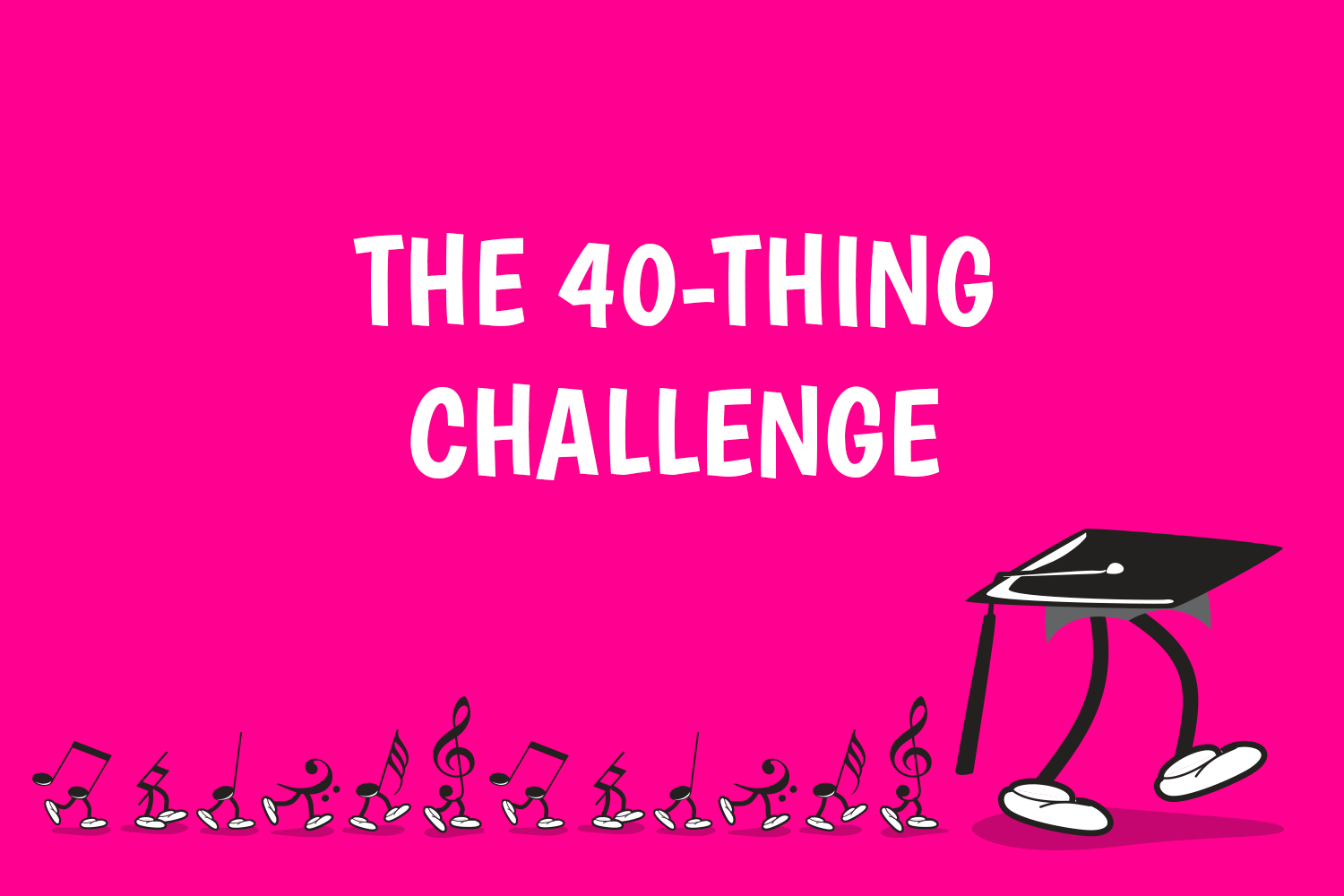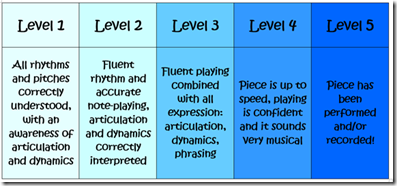The 40-Thing Challenge

At the end of last year, I announced to my students that everyone would be participating in the 40-Piece-Challenge, the origins of which are explained by Elissa Milne in her excellent blog. They were excited at the thought of participating in something official, and I spent a good deal of my time over the holidays preparing personalised progress charts, finding just the right stickers and stamps, and making a big wall chart to stimulate the maximum amount of competition between students as possible J.
Another thing I spent a lot of time on was thinking about what actually constitutes a ‘piece’. Some students do try to rort the system a little, learning pieces that are just WAY too easy for them and expecting it to count towards the 40. I wanted to come up with the perfect way of closing this loophole, so I put this to the Australasian Piano Teachers Facebook group. Some fascinating discussion ensued.* In the end, it was the fabulous Elissa Milne who nailed it: THE PIECE HAS TO BE A LEARNING EXPERIENCE. It is the best statement ever… everyone understands and agrees that if they can learn a piece in seconds, just by sight reading it, it can’t be much of a learning experience. I now follow this up by saying that as a rough guide it should take at least 2 or 3 decent practice sessions to get the piece sounding absolutely gorgeous and confident. In this way it’s possible to have many pieces on the boil at once, some of them easy and some of them hard, and to easily get through 40 or more pieces in the year.
Another fabulous thing that came out of the Facebook group was Christina Kay’s excellent idea of having five ‘levels’ for each piece learned. Getting to Level 5 meant you had memorised and/or performed and/or recorded the piece. I decided to take this a little further and specify exactly what each level would mean:

The great thing about receiving a tick or sticker or stamp for each level was that students (and I) can easily keep track of exactly where they are up to with any particular piece. All in all, everything was perfectly set up for the challenge and students were very excited to receive their charts and the brand new stamps I bought.
However, 5 weeks into term I was starting to lament the fact that the focus of every lesson for every student was repertoire, repertoire and more repertoire. I had obviously set up this challenge a little too well, because other important things like composition, improvisation, general knowledge, aural skills, technical work, transposition and theory were all being neglected in favour of learning as many pieces as possible.
So… I decided to make other things count as a ‘piece’, like a certain amount of scales or theory work. Students would still be able to get stamps for levels 1-5, the levels would just apply to different tasks. Here are some of the ways students can achieve the 5 levels that can count towards the big four-oh:
· Transposition: Play an easy piece in 5 different keys (original plus 4 others)
· Complete five pages/concepts/sections of theory (all at my discretion, depending on level)
· Complete a technical work challenge in five keys (for example, a Russian scale, or a set of tasks like scale/arpeggio/octaves each key
· Sight reading: Each of Sections 1-5 in the Blitz Sight Reading levels
· Research 5 elements of a piece: period, composer, contemporaries, art/history, form
Thus it has morphed into the ‘40-thing challenge’, and is going superbly! Once they get to level 5, they get a smiley face on the wall. I also bought stick-on gems to show when someone achieves something particularly impressive, like learning a really long piece, or doing an intricate composition. So, at a glance the wall shows who is working on long term projects and who is powering through the short term projects. But everyone feels rewarded!
* If you are not part of this group, and you are a piano teacher in Australasia, you are seriously missing out. Join immediately.

Pingback: Carina Busch|KlavierpädagoginDie 40 Piece Challenge und was wir davon mitnehmen können ⋆